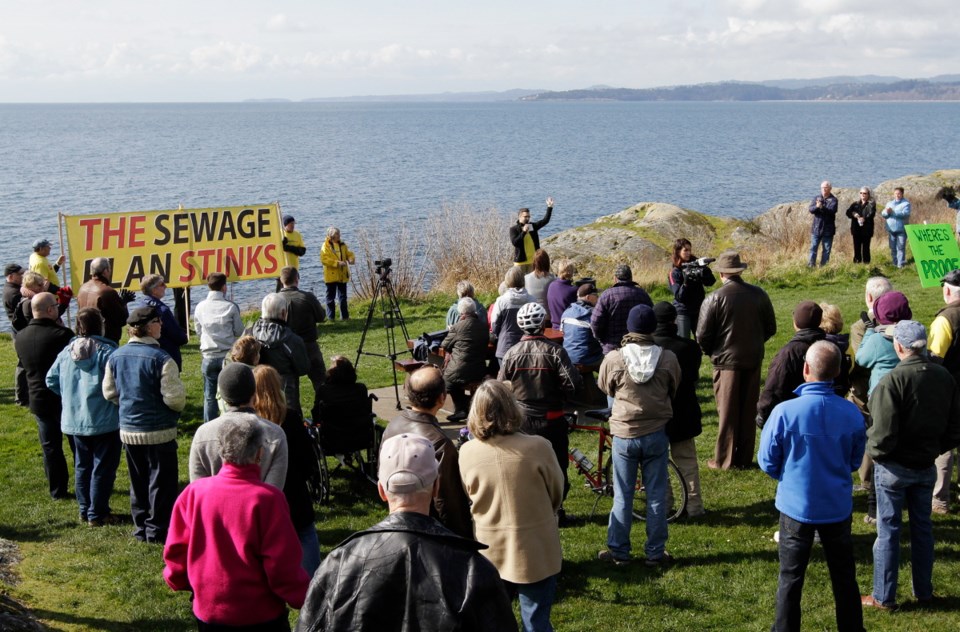The recent announcement by the Capital Regional District board that it has decided not to pursue a single site for a sewage treatment plant on Department of National Defence land adjacent to the Macaulay Point pumping station (or adjacent to the McLoughlin Point site) is a big disappointment.
I have walked and cycled around this area several times — it is obvious that there is plenty of underused land. If land is acquired from the DND with appropriate consultations and assessment, a single sewage-treatment plant could be built.
This would likely save taxpayers some of the huge projected expense for land-based sewage treatment plants (currently $783 million ‚Äî the equivalent of nearly 10¬ÝBlue Bridges). The reasons given for not pursuing this land are mostly similar to those given more than five years ago. The main reason stated recently was that the time required to acquire the land would result in ‚Äúsignificant delay in the program schedule.‚Äù
There is no urgent need to build the land-based sewage treatment plants, because it is impossible to define in measurable terms that there will be any benefit to public health or the environment from this construction. The deadlines have been arbitrarily created by regulators and the CRD.
All levels of government — federal, provincial and municipal — have been made aware of the judgment of marine scientists and public health officials that the current deep-sea outfalls are highly effective in enabling the sewage effluent to be treated naturally by the marine environment. No credible scientist has presented evidence to counter the judgment of the University of Victoria marine scientists.
There has never been a comparison of the overall environmental harm created by the proposed plants compared with the current minimal effect on the marine environment created around the deep-sea outfalls.
It is understandable that the project team wishes to get on with the planning. The newly formed commission needs an updated, approved plan to implement. However, this question needs to be continually asked: “Is this in the best interest of the taxpayers?”
Federal and provincial funding was announced 11¬Ýmonths ago, but there is still no signed legal agreement in place for this funding. The CRD is taking on a significant financial risk by continuing the planning without this agreement.
I continue to hope that the CRD will have the wisdom and courage to challenge the federal regulations. Given Victoria’s unique marine receiving environment, will they seek an exemption to the federal wastewater systems effluent regulations?
The Victoria sewage-treatment issue is a battle between policy based on the best science and that based on populist, political decision-making.
The federal regulators have taken a one-size-fits-all approach to all sewage treatment in Canada, irrespective of the receiving environments. It is like saying every city should have so many snowplows, irrespective of the annual snowfall.
In the 1980s, the U.S. Environmental Protection Agency recognized that where there are unique receiving environments (similar to the Victoria bight) that land-based treatment was not needed.
The World Bank, supported by the World Health Organization, considers deep marine outfalls to be effective and sufficient treatment where there are unique marine receiving environments.
The provincial regulator (Ministry of Environment) for years acknowledged that if a 100-metre diffusion zone was allowed, Victoria’s deep sea outfalls do meet the regulated standards that have been developed. Even so, in 2006, the CRD was required by the province to come up with a plan for land-based treatment.
Most of the CRD politicians seem to be driven by their belief that it is the right thing to do, regardless of the best science, the cost and the lack of definable benefit.
There is still time to rethink the present plans before irreversible decisions are made.
Dr. Shaun Peck was the medical health officer for the CRD from 1989 to 1995.



